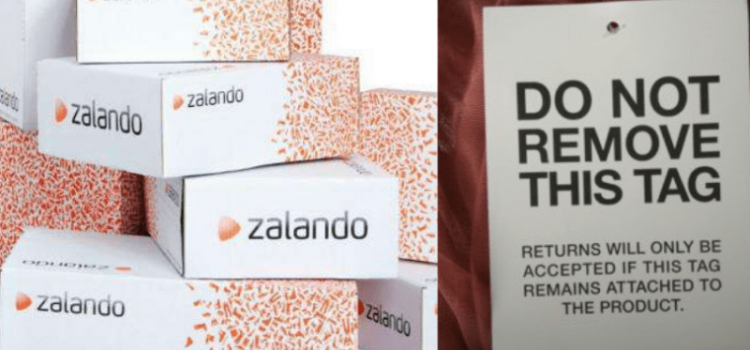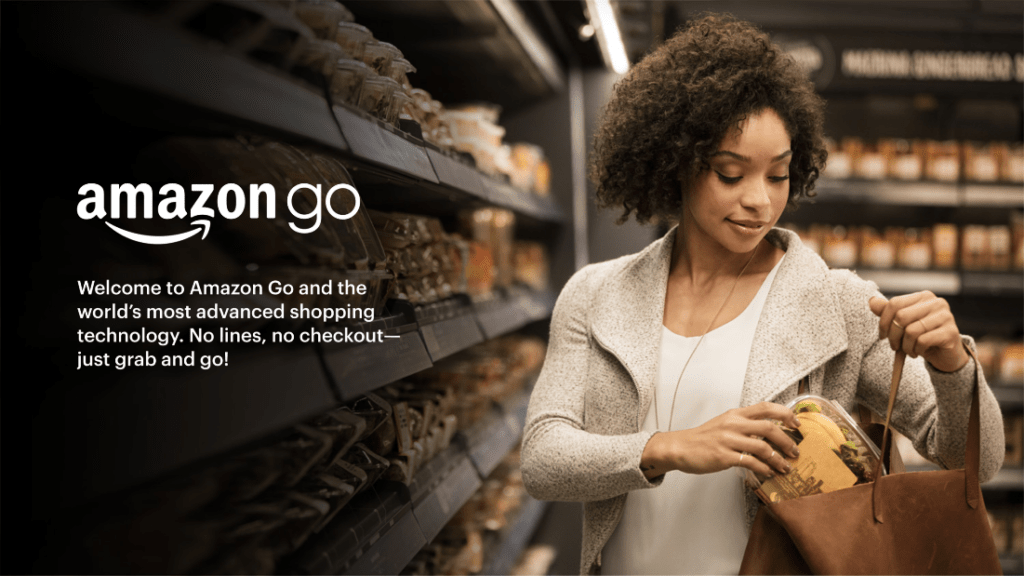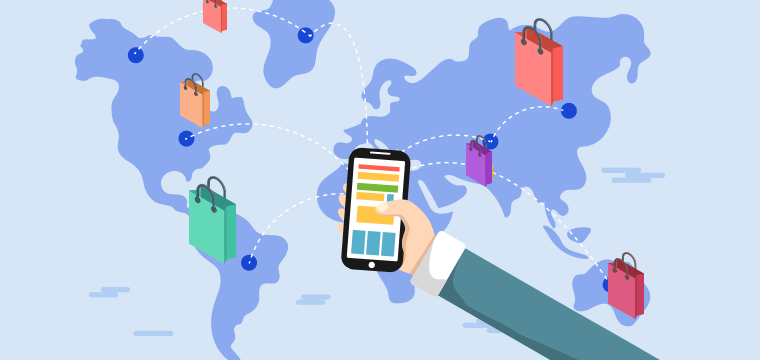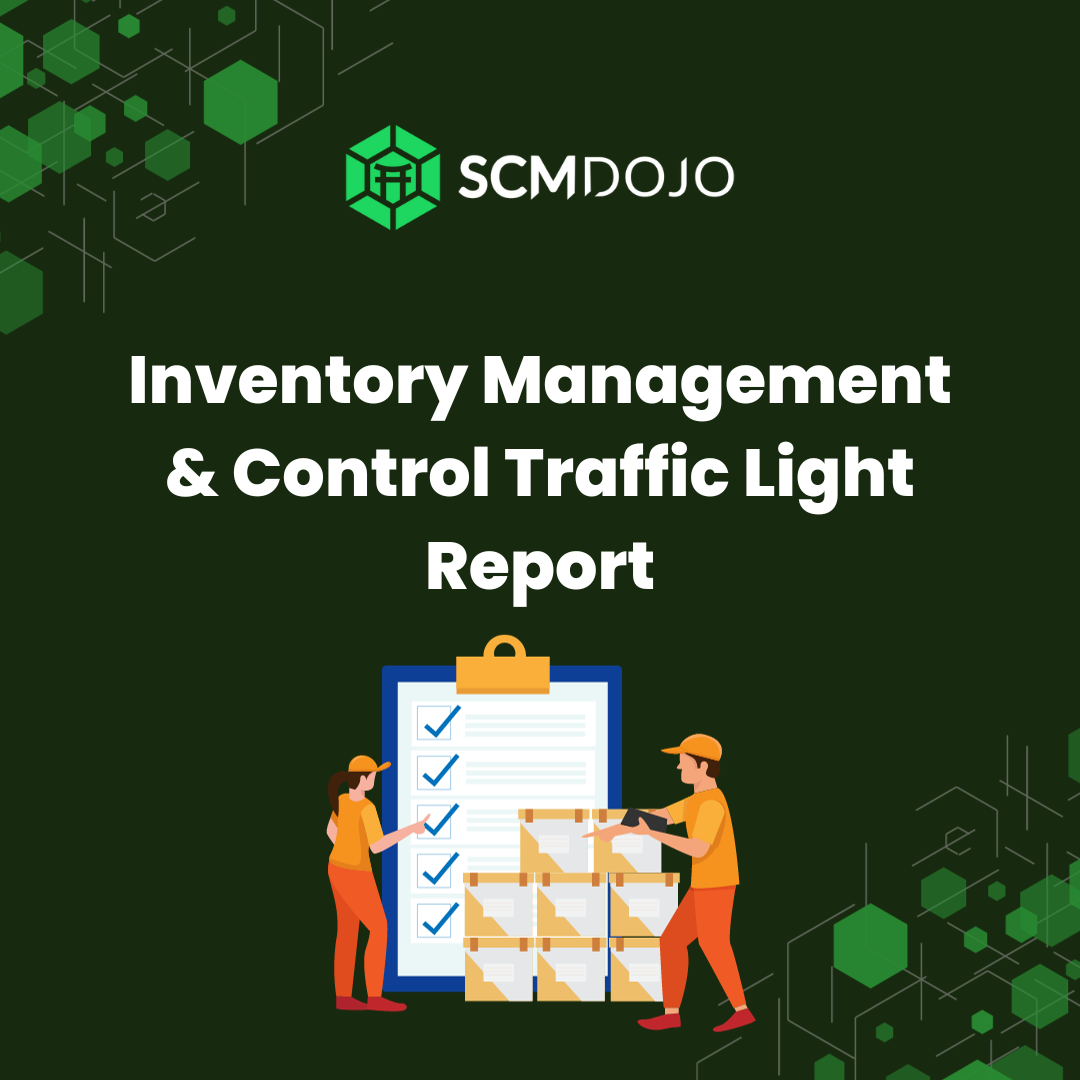The rise of eCommerce and fulfillment did change the retail supply chain landscape dramatically in the past decade.
Online was the trend and fulfillment centres dominating the world of distribution. The downside was that traditional retail supply chain relying on offline networks (physical stores) struggled and several went bankrupt.
Are the current eCommerce business models still valid? Six trends which indicate that there are changes upcoming which will redefine the current landscape and will have an impact on current retail supply chains.
Best Warehouse Assessment & Improvement Tool
Trend 1: Successful retailers will effectively integrate offline and online combinations
While the eCommerce industry is booming and growing at a fast pace, there are a few companies who are taking up the major market share. As the consumer dollar can only be spent once, the loser in this game seems to be the offline retail shops. But luckily for them, that seems to change. Major retail companies acknowledge that success will be in a balanced combination of online and offline stores.
Amazon has now grown into a full-fledged online store with a range of products including electronics, clothing, software, pet supplies, and of course, books. But is Amazon in online sale only?
With its Amazon Go they are exploring the path of offline retail. Operated by the online retailer they opened (2015) a chain of convenience stores in the United States. The stores are partly automated, with customers able to purchase products without being checked out by a cashier or using a self-checkout station.
On the other side we see IKEA, a company who wasn’t leading the retail supply chain revolution for its online sales but has always been very limited in their offline policy. Mega retail stores just outside of the city centres, big enough to serve a lot of customers and give them a real shopping experience.
Although IKEA was leading in integrating social media and the internet in their marketing strategy, they were very late (2016) in implementing an online strategy. This comes after IKEA realized that it was losing market to smaller market entrants who used eCommerce to sell directly to consumers, hence, a step behind when it comes of thinking about retail supply chain. Apart from utilizing its online website marketplace, IKEA is juggling the idea of diversifying and selling its products through other online avenues such as Amazon.
It seems easy, just combine the two models. But these transitions take time and specialized knowledge. Operating an online store is completely different as operating offline stores. Also, the level of investment is of a different type. Nevertheless, in the survival race this is the direction to go.
Trend 2: Do not rely on one market, go cross border
Although – in theory – a online store does not face any borders and can be active in every country, we see – in practice – that most of the shops operate on local markets only. Of course, we all know AliExpress, Alibaba, Amazon and Ebay, but are you also familiar with Etsy, BestBuy, Jet, Zalando, Bol, Souq, Avenida or Americanas? Most likely not all, as they are all significant local players.
Just look at the power of the big 4. They are able to make huge investments as needed to survive in this type of business. Easily investments of hundreds of millions of euros in automated warehouses, distribution structures, eCommerce platforms, and retail outlets. To make a profit you have to sell a huge number of products and ship a tremendous number of parcels.
In offline you will be able to survive using a local strategy only, but in online the omnichannel cross border strategy is the only way to not be beaten or eaten by the big 4.
Key success factors are:
- Being present in more countries,
- Able to ship and overcome all customs related issues,
- Having have an online and offline representation.
Take Apple as one of the good examples who have explored a successful omnichannel cross border strategy.
The future proof retailer will have omnichannel, cross border operation which combines offline and online shopping.
Trend 3: Discount and Specialty retailers will win in offline sales
It is for sure that any offline retailer who doesn’t add additional value to its customer will lose the game. Referring to Porters’ focus and cost strategies, the key to the survival of offline stores is in discount or specialization.
Discount stores operate a low margins and high volumes. One cent profit is nothing, but a million cents makes it profitable. So, sell a lot with low margins. The discount model is not successful in online sales. The transportation and handling cost will make the product too expensive. Traditional several discounters are active in the grocery and food stores with limited assortment. Many of these major discounters will be going to operate as supercentres, which can add a full-service grocery store to the traditional format. Example of successful discounters is Walmart, Lidl, Action, Aldi and Primark.
Another type is the specialty or category killer discount stores, such as Toys “R” Us or Staples. They specialize in specific merchandise lines, relying on bulk purchase and efficient distribution to keep down costs. If they are not successful in maintaining efficiencies and low pricing, they face bankruptcy. This type of stores can be successful in either or both online and offline.
On the other side of the spectrum, there are specialty retailers. This are small retail outlets that focuses on selling a particular product range and associated items. Characteristics are:
- Depth in the type of product that they specialize in selling,
- Selling at premium prices,
- Providing higher service quality and expert guidance to shoppers.
The main model of these type of retailers will be an offline physical store, which might be supported by an online solution. The online part is used for marketing and convenience to existing customers.
Both discount and specialty stores will keep on relying on an offline concept. By keeping the cost low (discount) or offer the consumer what he doesn’t get on the Internet (specialty) they will survive the online competition.
When the online model is dominating, the focus will be on convenience shopping, with broad assortments. In case of a dominating offline model, the focus will be on low-cost discount or product/brand specialization.
Trend 4: The high cost of returns should be banned
For many eCommerce retailers one of the unique selling point was the possibility to freely return goods if they are not as you expected. In one hand driven by customer right legislations, on the other hand, to equalize a big advantage of the offline store; the feel and touch element. But the cost became outrageous, with return percentages of over 40% which became normal in the business. The associated cost did shrink the margins. Cost which are:
- The lost sale and unhappy customer.
- The investment in free transportation cost and free return cost. This investment is lost when a product is sent back to the retailer. A big challenge for the retail supply chain
- The labor costs of receiving, inspection and re-storage
- The cost of downgrading or liquidation.
Currently, we see a change in the approach of customer returns. Zalando is using big labels to prevent that clothing is used one time and then returned. In the US there is a national database which flagged serial returners. Look at this statement taken from the IKEA return policy. “You will be required to present a valid photo ID for all returns and exchanges made in store. Information from your ID will be retained in a company-wide database to be used only for authorizing returns.” And due to the high rate of products which are being destroyed, high levels of returns aren’t a sustainable solution anyhow.
The main solution should be found in providing excellent sales service when they buy. In that case, you can dramatically reduce returns by making sure the customers are buying what they want and need, versus what they might like to try. Take this example
“Every item you order at Spreadshirt is printed for you by hand. That’s what distinguishes us from other e-commerce retailers. Returns aren’t put back on our warehouse shelves, as we can’t resell them. This is why we want to make sure you’re 100% content with your order.”
IKEA can offer their customers 365 days return policy. Why? Because they have loyal customers, but more likely: they offer click and collect. Returns should be brought back to the store.
For sure, the return policies will change, as this part of the business model is no longer viable for a sustainable business.
Trend 5: Free door-to-door transportation and same/next day delivery as a premium
One of the major advantages of offline shopping is that you can touch and feel the product and take it directly home. This was the key success factor for IKEA when they started to spread out their business model some decades ago. In eCommerce we have to wait, but luckily not too long. Next day of even same-day delivery is offered for free, to win the battle with the offline store.
Is this model still viable, or will change in the near future? The model results in an inefficient warehouse and transport operations. Single line orders are not utilizing the warehouse picking process efficiencies, and the load utilization of transport vehicle is reaching the economic minimum. Take to that in average per day two delivery services are knocking on you house door, causing congestion in the main cities. An underestimated retail supply chain challenge.
At this moment the concept of consolidation is undoable, as orders are all single line when next day delivery. But is it actually necessary that we order at 11:00 pm and get it next day delivered? And is your answer the same as you have to pay additional for that service? Even worse, I am able to order an iPhone cover directly in China for $1 and free shipping, use it for a month and throw it away. Is this sustainable?
No, is the simple answer. It is already starting to change, but the main retailers are still afraid of the consequences. Most likely there will be a minimum order value to qualify for free shipping. Main eCommerce retailers like Amazon and AliExpress are already offering premium services. Economy delivery is the standard, not next or same day.
Now the model is supporting that I do not consolidate my order. I order when I feel the need, and of course I want to have it delivered immediately without any cost. There is no incentive to do it differently.
Trend 6: Drop shipments for local products
In the drop shipment model, the seller is only taking care of the administrative and money flow, the physical goods flow is directly from the supplier to the consumer. The model was very often used by starting an online retailer, as they didn’t have to invest in inventories. Secondly, the model was used for taller, heavier goods. Why should I bring them first to a distribution centre?
As we currently see, the online retail companies are shifting from retail supply chain operations (they actually own the inventory) to fulfilment operations (which deliver the service but do not own the products). In analogy with 3PL Logistics Service Providers, they are moving towards a 4PL concept in which they do not necessarily own the asset for the fulfilment operation. Take into account that most of the eCommerce orders are single line, there is not a direct need to first ship the goods to a distribution centre.
At the supplier side, we see that they are getting better equipped in handling single-line orders. Why shouldn’t I ship directly from the supplier, is the logical question? We currently see that Amazon is updating their model and makes it possible to order at affiliates, resulting in that orders are shipped out directly from different locations/suppliers, one of the growing trend in retail supply chain. Only in those cases where warehouse activities as consolidation, postponement and break-bulk are still key for the customer or the cost level, the direct shipment will not be used.
What’s next?
In summary, the future proof retailer will have a cross border operation which combines offline and online shopping. When the online model is dominating, the focus will be on convenience shopping as the main part of retail supply chain design, with broad assortments. In the case of a dominating offline model, the focus will be on low cost (discount) or product/brand specialization.
Efficiency and cost-saving will be achieved in the near future on the level of minimizing returns, offering premium transport services, and reduction of transport and storage cost by using drop shipments.
If you think there more trends in retail supply chain, we are missing let us know.
About the author:
Paul Denneman is a supply chain expert and international master trainer. He is observing changes in supply chains for the past 25 years. Want have more insights, please visit www.Mutatis-Mutandis.com
This blog post is sponsored by Sarasota moving company to use local movers if you are looking to moving stuff!
Recommended Reading On Retail Supply Chain
Managing the Retail Supply Chain: Merchandising Strategies that Increase Sales and Improve Profitability
Retail Supply Chain Management
About the Author- Dr Muddassir Ahmed
Dr MuddassirAhmed is the Founder & CEO of SCMDOJO. He is a global speaker, vlogger and supply chain industry expert with 17 years of experience in the Manufacturing Industry in the UK, Europe, the Middle East and South East Asia in various Supply Chain leadership roles. Dr. Muddassir has received a PhD in Management Science from Lancaster University Management School. Muddassir is a Six Sigma black belt and founded the leading supply chain platform SCMDOJO to enable supply chain professionals and teams to thrive by providing best-in-class knowledge content, tools and access to experts.
You can follow him on LinkedIn, Facebook, Twitter or Instagram








